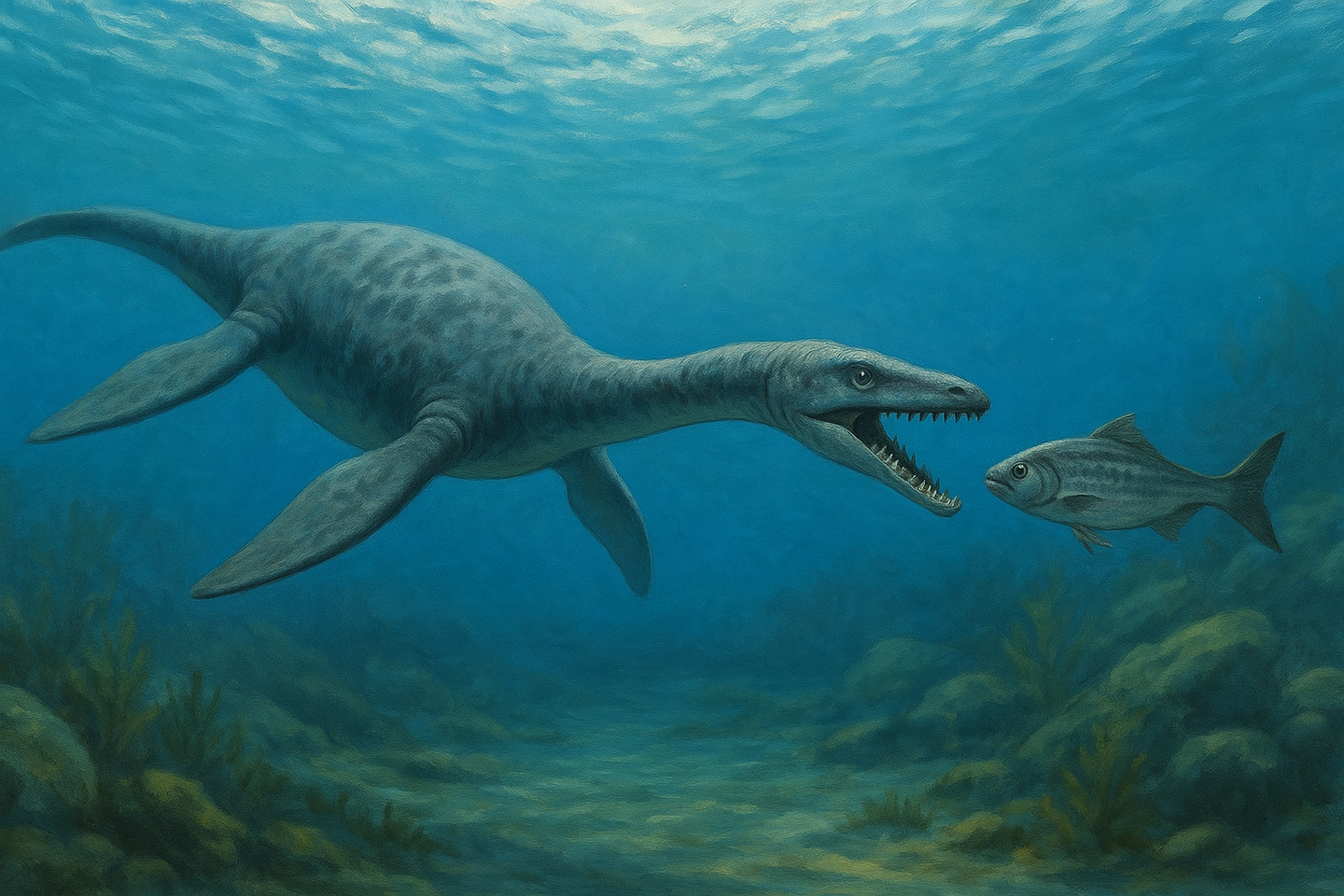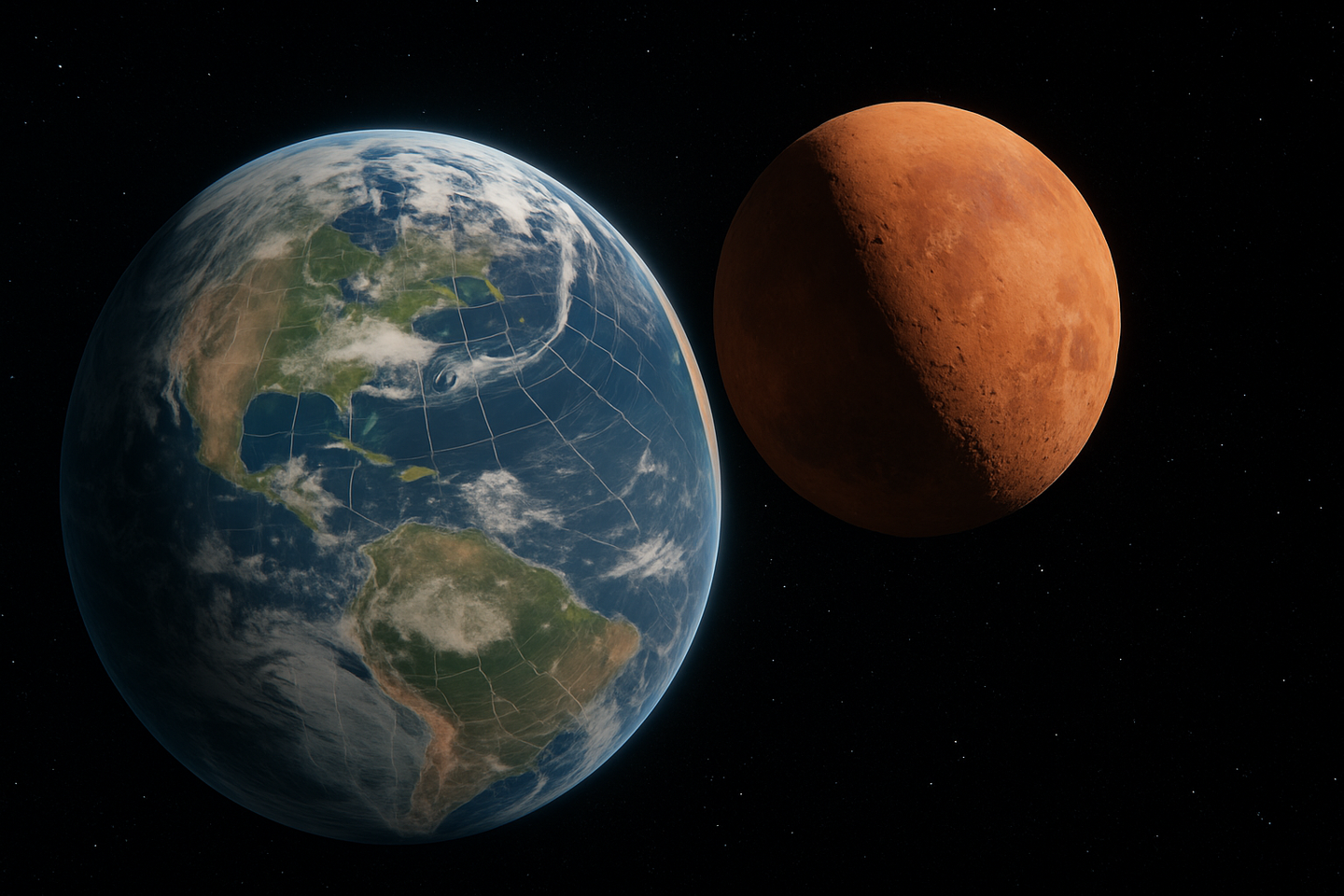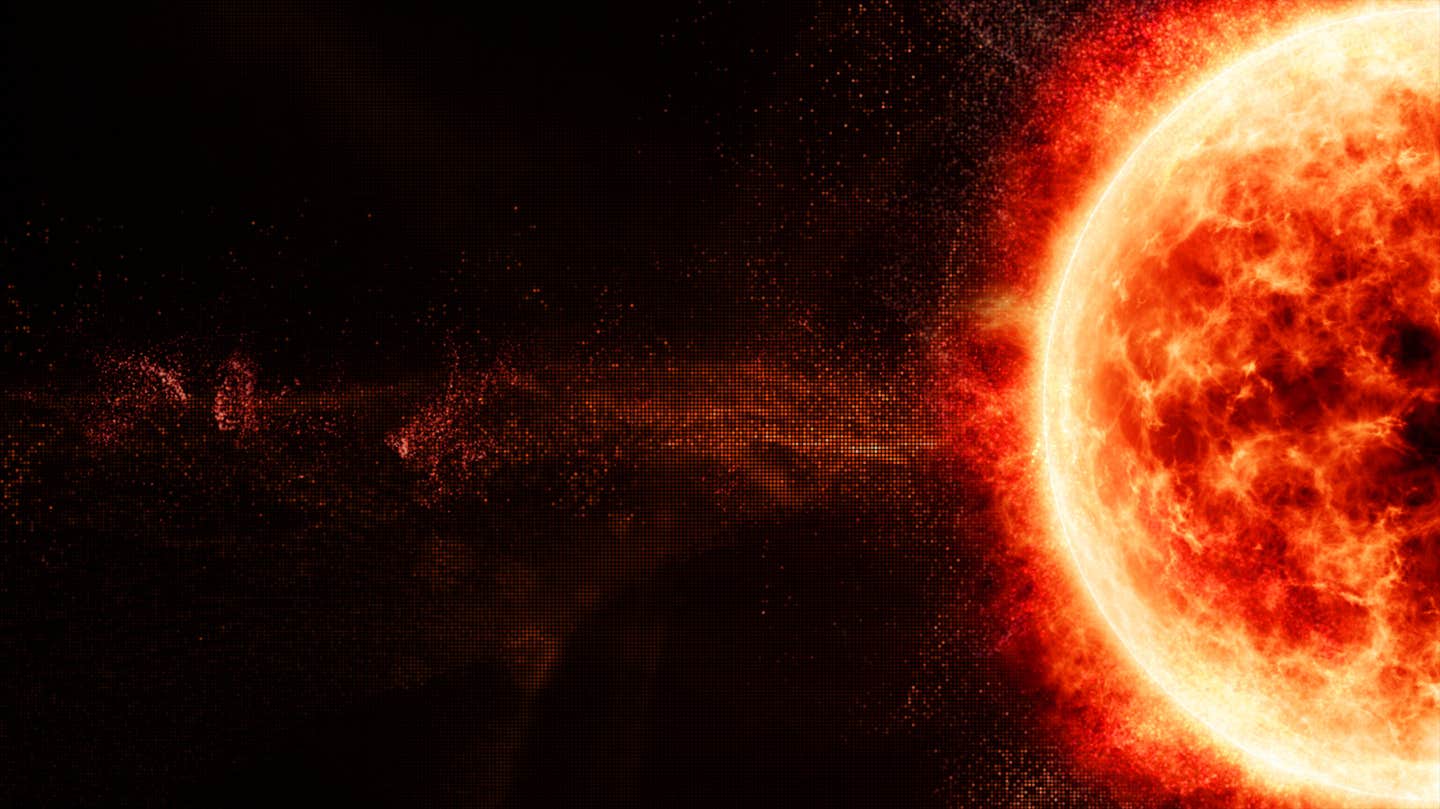Newly discovered Plesiosaur species rewrites Jurassic history
Hidden in museum collections for decades, a newly discovered plesiosaur species from Germany reveals how ancient reptiles thrived during Jurassic seas.

Scientists reveal a newly discovered plesiosaur species from Germany’s Posidonia Shale, shedding light on Jurassic ocean diversity. (CREDIT: AI Generated / The Brighter Side of News)
In the rolling hills of southwest Germany, there is a rock layer that has yielded some of the most spectacular marine fossils in the world. Known as the Posidonia Shale, this 183-million-year-old treasure chest has revealed ichthyosaurs, crocodile-like thalattosuchians, and even the remains of giant ammonites. Yet one of its most intriguing residents went unnoticed in museum collections for decades.
That hidden resident is now recognized as a brand-new species of plesiosaur. Plesiosaurs were long-necked marine reptiles that glided through oceans at the same time dinosaurs roamed the land.
This new find is called Plesionectes longicollum—a name that translates to “long-necked near-swimmer.” It adds a fresh twist to the story of how ancient seas teemed with life. You may have heard of the more famous plesiosaur relatives, like Elasmosaurus, which had necks so long they looked almost unreal. But this German discovery reveals that the diversity of these creatures was far richer than once thought.
A Fossil Waiting in Plain Sight
The skeleton that would become Plesionectes longicollum was actually pulled from a Holzmaden quarry back in 1978. At first glance, it looked like another well-preserved plesiosaur, a group already familiar from the site. The Posidonia Shale is famous for its remarkable fossil quality, often preserving even soft tissues, skin outlines, and stomach contents. This skeleton was no exception—it still shows faint traces of fossilized tissue wrapped around its bones.
For years, though, the fossil sat in storage. Researchers published short notes about it, usually focused on the preserved soft tissue, but no one gave its skeleton a full study. That changed when Sven Sachs of the Naturkunde-Museum Bielefeld and Dr. Daniel Madzia of the Polish Academy of Sciences decided to take a deeper look.
“This specimen has been in collections for decades, but previous studies never fully explored its distinctive anatomy,” Sachs explained. “Our detailed examination revealed an unusual combination of skeletal features that clearly distinguish it from all previously known plesiosaurs.” Their study is published in the journal PeerJ.
Related Stories
- New fossil discoveries reveal life before Earth’s greatest extinction
- New species of ancient humans rewrites the story of early human evolution
Naming a New Species
When scientists classify a new species, they look for unique features in the skeleton that cannot be explained by age, injury, or natural variation. This plesiosaur, cataloged as specimen SMNS 51945 at the Stuttgart State Museum of Natural History, showed exactly that.
Even though the skeleton belonged to an immature animal—not yet fully grown—its bones carried features that could not be brushed aside as juvenile traits. Its neck was longer than most relatives from the same time, and several limb bones had shapes that did not fit into any existing category.
The researchers concluded that the animal represented a completely new genus and species. They chose Plesionectes longicollum to highlight its long neck and its close relation to other early plesiosauroids.
Why This Matters for Ancient Oceans
At first, naming one more marine reptile may not sound earth-shaking. But in paleontology, every new species is a missing puzzle piece. During the early Toarcian stage of the Jurassic, Earth’s oceans faced massive environmental stress. One of the biggest events was the Toarcian Oceanic Anoxic Event, a period when large parts of the seafloor lost oxygen, killing many marine creatures.
“This discovery adds another piece to the puzzle of marine ecosystem evolution during a critical time in Earth’s history,” said Dr. Madzia. “The early Toarcian period when this animal lived was marked by significant environmental changes, including a major oceanic anoxic event that affected marine life worldwide.”
Finding Plesionectes in this interval shows that plesiosaurs were already diversifying and filling ecological niches, even as many species struggled. It helps paint a more complete picture of how life rebounded during one of the Jurassic’s most turbulent chapters.
The Posidonia Shale’s Growing Legacy
The Holzmaden region has been a magnet for fossil collectors and scientists for centuries. Its shale layers were deposited in a shallow sea nearly 183 million years ago. Because the seafloor often lacked oxygen, dead animals that sank there were not disturbed by scavengers. Fine sediments entombed their bodies quickly, preserving details rarely seen elsewhere.
This special environment has produced some of the most complete marine reptile skeletons ever found. Ichthyosaurs with unborn young inside their rib cages, crocodile-like predators frozen mid-swim, and ammonites with soft parts still visible—all of these have emerged from Holzmaden’s quarries.
Before Plesionectes longicollum was recognized, five different plesiosaur species had been described from the same formation. They represented all three of the major plesiosaur lineages. Adding one more species underscores just how rich and diverse this ecosystem was.
A Glimpse of Prehistoric Motion
What did Plesionectes longicollum look like in life? Imagine a sleek reptile about the length of a small car, with flippers instead of legs and a long, flexible neck stretching forward as it chased fish. Its streamlined body and powerful limbs suggest it was a capable swimmer.
Like modern sea turtles, plesiosaurs propelled themselves with strong strokes of their flippers, gliding through the water with surprising grace. The preserved soft tissues hint that this animal, like its relatives, had skin and body contours suited to fast swimming. Combined with its elongated neck, it may have used quick strikes to catch prey, snapping up fish or squid from a distance.
Plesiosaurs evolved early in the Jurassic and spread worldwide, surviving until the mass extinction at the end of the Cretaceous, the same event that ended the reign of dinosaurs. However, their early evolutionary history is still poorly understood. Each new fossil from this period offers insight into how they adapted to their marine world.
In the case of Plesionectes longicollum, its unusual anatomy shows that even young plesiosaurs were branching into unique forms. It demonstrates that diversity was already established soon after the group appeared. This challenges the idea that plesiosaurs only became varied later in the Jurassic.
Why the Name Matters
Scientific names can feel daunting, but they carry meaning. “Plesionectes” comes from Greek roots meaning “near swimmer,” tying it to its plesiosaur kin. “Longicollum” highlights its long neck, one of its most striking traits. Together, the name reflects both its family ties and its unique body plan.
Names also preserve discoveries for future generations. Once a species is named and described, other researchers can compare new fossils against it. That way, the record of life on Earth becomes clearer with each study.
What This Means for You
Even if you never visit Holzmaden or peer into a museum drawer of fossils, discoveries like this connect you to Earth’s distant past. They reveal that life has faced radical environmental shifts before and adapted in remarkable ways. By studying creatures like Plesionectes longicollum, scientists can trace how ecosystems recover after crises. Those lessons are relevant today, as our oceans face challenges from climate change and oxygen loss.
The next time you hear about a “new species,” remember that it is more than just a name on paper. It represents detective work, patience, and a window into worlds long gone. And sometimes, the most exciting stories are the ones that have been waiting quietly in storage, waiting for the right eyes to look closely.
Note: The article above provided above by The Brighter Side of News.
Like these kind of feel good stories? Get The Brighter Side of News' newsletter.



